How to build muscle – A complete guide
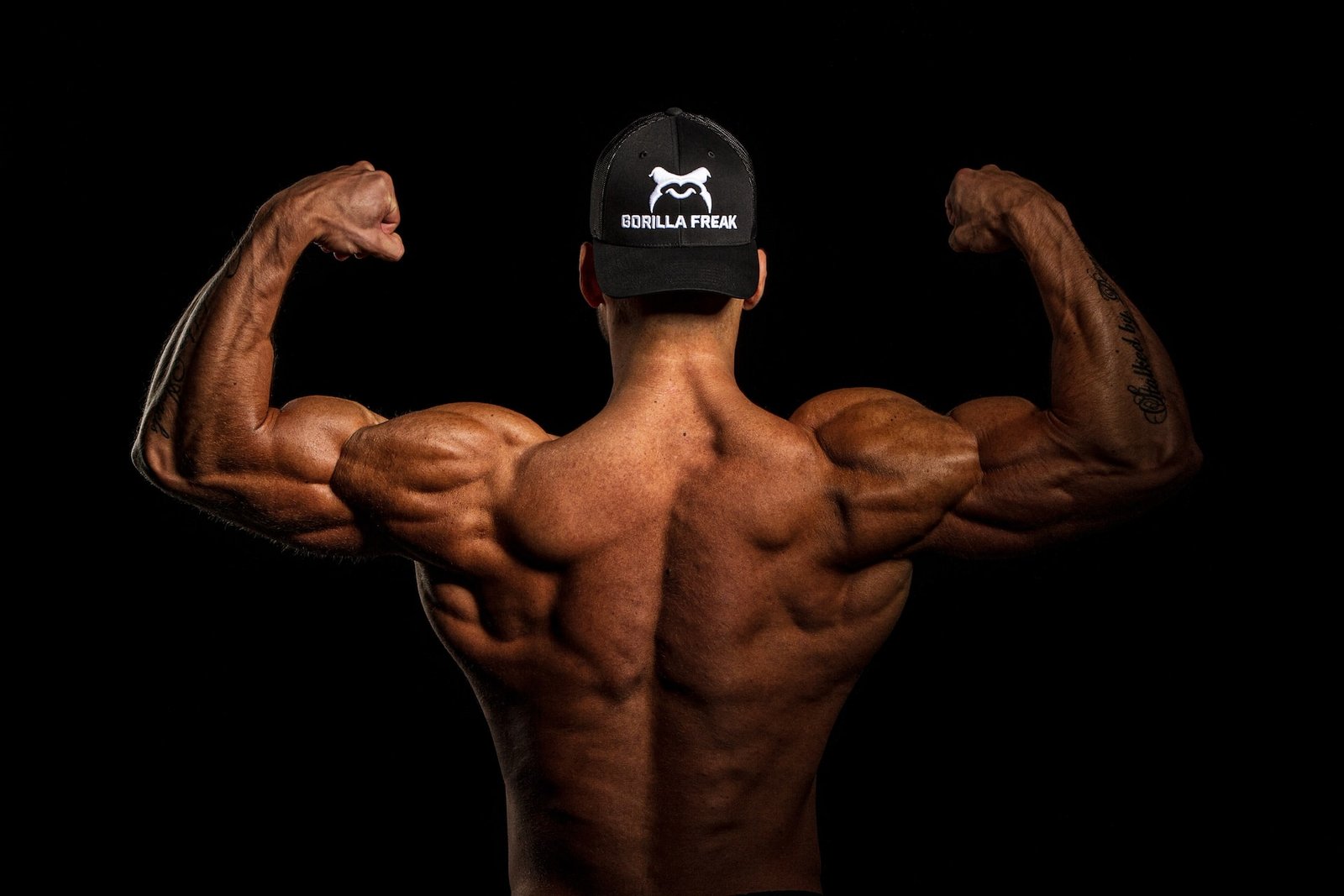
Building muscle can actually be a pretty complicated science, requiring you to do multiple different things consistently. Failing on any one of these things can have you guessing why you are not making progress despite working so hard in the gym. Here is our complete guide on how to build muscle, to make things easier for you.
Building muscle, also known as “Hypertrophy” is possible only as a result of doing the right amount and type of training in the gym, eating the best foods and getting the correct amount of rest. We are going to break down each of these into smaller understandable topics, so that you can make sure you are building as much muscle as possible.
What Is Hypertrophy?
Hypertrophy is defined as “The enlargement of an organ or tissue from the increase of size of its cells.”
Muscular hypertrophy therefore is the growth of muscle cells. There are two types of hypertrophy: Myofibrillar and Sarcoplasmic, but the one that most bodybuilders and strength athletes are interested in is Myofibrillar.
This involves the activation of the contractor muscles and Myofibrillar hypertrophy results in strength and speed increases as well as muscle size increases.
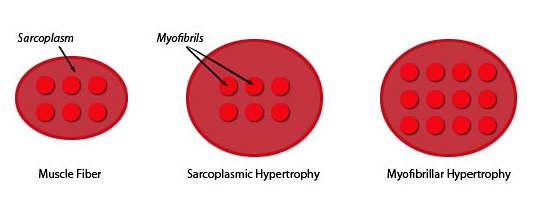
In order to cause Hypertrophy one must actually cause tiny micro tears and damage the muscle they are trying to grow. This is called mechanical damage. This is done by lifting weights. These micro tears then repair and in the process the cells get bigger.
Another important factor is metabolic fatigue, which happens when the supply of ATP (a form of available energy) in your muscles is exhausted. Your muscles in basic terms realise that next time you need to be able to have more available and grows the cells to account for this.
So enough of the technical stuff for now, how do you make those muscles grow?
How to train for muscle growth
With this knowledge now available to us, what is the best way to train, to build bigger muscles?
High volume workouts consisting of lots of reps and sets in order to cause metabolic fatigue, or High weight, low rep workouts where you train until failure?
The answer is yes. To both questions. The truth is that you can create muscle growth by doing low weight, high volume workouts or high weight, low rep workouts. Both have been proven in studies to be just as effective as each other, see below for an explanation

How many sets for hypertrophy
High volume workouts are great for hypertrophy. This study showed that high volume workouts result in significant increases of muscle size when compared to lower volume workouts, up to a certain threshold, at which point the benefits of volume level off. This is why 10×10, otherwise known as german volume training, works so well. It causes both mechanical damage and metabolic fatigue. What this study also showed though, was that there was no comparative increase in strength when compared to other types of training.
The negative? It can be very boring, and time consuming and might lead to you giving up or not completing the volume required.
High weight, Low rep routines are also proven to be great for hypertrophy and also specifically target strength. This study compared two groups, one doing lower weight loads and one doing higher weight loads. The study found that both produced hypertrophy but the higher weight load group produced a bigger strength increase, measured by the increase in the 1 rep max weight on the bench press over the period of the study. It hypothesised that by combining both low and high load sets, this would be optimal for maximising muscle growth.
We have looked at a huge amount of information over the last 20 years including hundreds of studies and the best way to maximise muscle growth appears to be using a combination of both, but the most important thing is to make sure that you are always incorporating progressive overload.
How to build muscle using progressive overload
Progressive overload, in simple terms is just making sure you do more each time, making the workout more difficult, over a period of time. Your muscles will respond by getting stronger and bigger to deal with the increase in work. If you aim to improve even just a little every time you go to the gym, and you do this alongside all of the other things mentioned in this article, then you are pretty much guaranteed to gain lots of muscle.
The “more” can come from any one of 3 different ways of making the exercise more difficult. The first and most obvious way is by adding more weight. When doing this it is important not to add too much too quickly as this can affect your form, which in turn could mean that the exercise is not working the muscle in the way it is supposed to. Go for small increments. This has been proven in many studies including this 2011 study.

The second way to overload is by increasing the amount of reps in a set. Try adding 1-2 more reps when compared with the last workout.
The third way is time under tension. This causes more mechanical stress on the muscle and induces muscle growth just as much as adding more weight or reps. For example, on a bench press, if you usually lower the bar back to your chest in TWO seconds, make the descent take 3 or 4 seconds for one of your last sets.
Progressive overload, combined with good nutrition are the most vital two aspects of muscle growth.
Best exercises for muscle growth
A lot of studies have shown that compound exercises like squats, deadlifts, bench press, barbell rows etc produce better results than concentrating on isolation exercises alone, like bicep curls.
Compound exercises also allow you to lift heavier weights, which has been shown to increase testosterone, and in turn this helps with hypertrophy. Compound exercises will help with bone and ligament strength as well. They will also help to prevent imbalances, and allow you to notice if you start to get any.
However, this does not mean that you should neglect isolation exercises, as they still have their benefits.
The most effective and simple training split would be a Push, Pull, Legs split performed 2x per week.
This could consist of something like this:
Monday – Push – (Bench press, Shoulder press, Tricep exercises etc)
Tuesday – Pull – (Deadlifts, Pullups and lat pulldowns, Rows, bicep and forearm exercises etc)
Wednesday – Legs – (Squats, Leg Press, Calf exercises etc)
Thursday – Rest day
Friday – Push
Saturday – Pull
Sunday – Legs
For more ideas on different training splits and exercises to incorporate to produce maximum muscle growth, check out our workout articles.
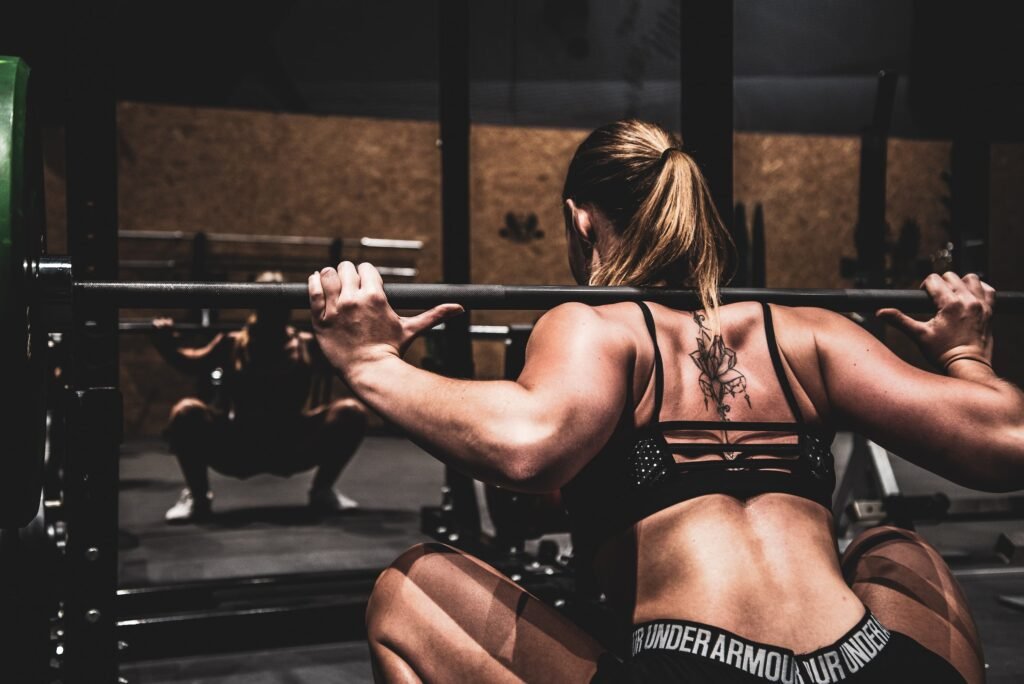

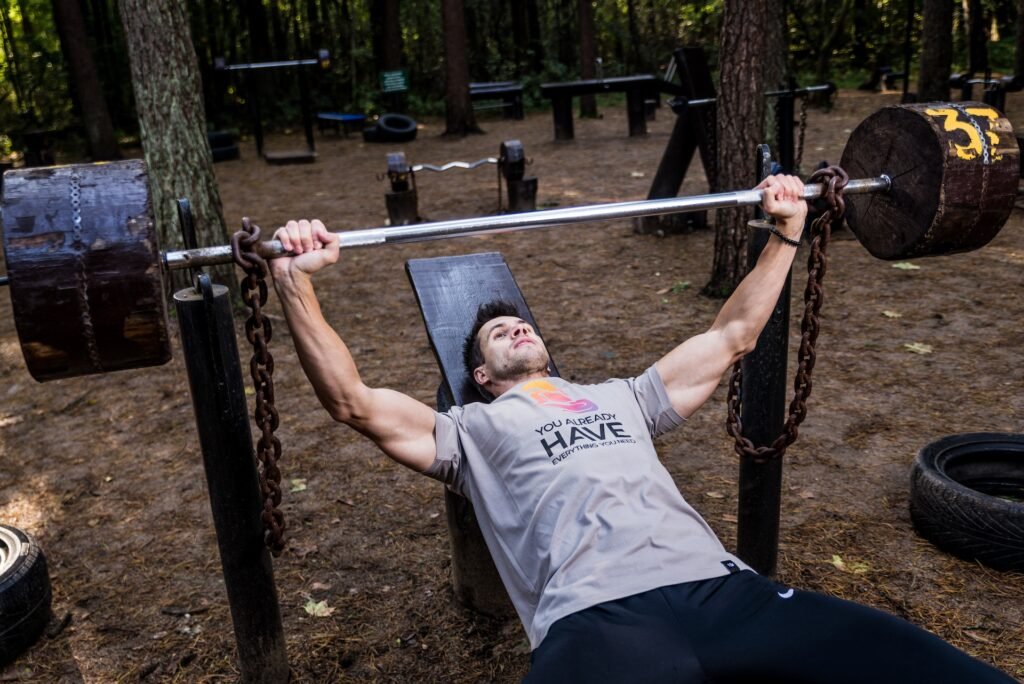
Food and nutrition for building big muscles
Nutrition is one of the most important aspects of everything mentioned so far. You could spend as much time as you want in the gym, doing a perfect amount of sets and reps, of all of the right exercises, but if you don’t get the nutrition right, you will not get the results you are looking for. To gain muscle, in the ideal circumstances, you need to be in a calorie surplus of between 300-500 calories. You also need the right quantities of the 3 important macronutrients: Carbohydrates, Fats and Protein. This is backed up by evidence from scientific research including this study, which concluded a calorie surplus of between 1500-2000kj (358 -478 cal) was advised when trying to gain muscle.
The best way to track your calories and macronutrients is via a tracking app such as MyFitnessPal – it is near impossible to accurately track your intake without using an app like this and you will likely fail if you try and just remember everything and count in your head, especially if you are relatively new to training.
Best carb sources for muscle gain
Carbs are a very important part of building muscle. Not enough and you won’t have the energy required to do those last 3 reps, you also might not have enough calories to put yourself into a calorie surplus. Too much and you might put yourself in too much of a surplus, which could cause you to put on lots of unwanted body fat.
For information on optimum macro nutrient ratios please see our article What are the perfect macronutrient ratios for building muscle.
Great sources of carbs are:
Sweet Potato, Brown rice, quinoa, beans.
Good sources of carbs are:
Potato, white pasta, white rice,
Ok sources of carbs are:
Bread
Try to avoid high consumption of carb sources high in sugar such as sweets, ice cream and fizzy drinks. These might be good for a very short energy hit, but they cause your blood sugar to suddenly rise and then crash and aren’t as efficient or healthy as the sources listed above. An added bonus is all of the extra vitamins and minerals in carb sources such as sweet potato and Quinoa.
We will refrain from calling any sources of carbs “bad” as in moderation and balance all carb sources can be used. There are times (straight after training and in the morning), where a some sugar is actually pretty useful, but obviously you don’t want to overdo sugar.
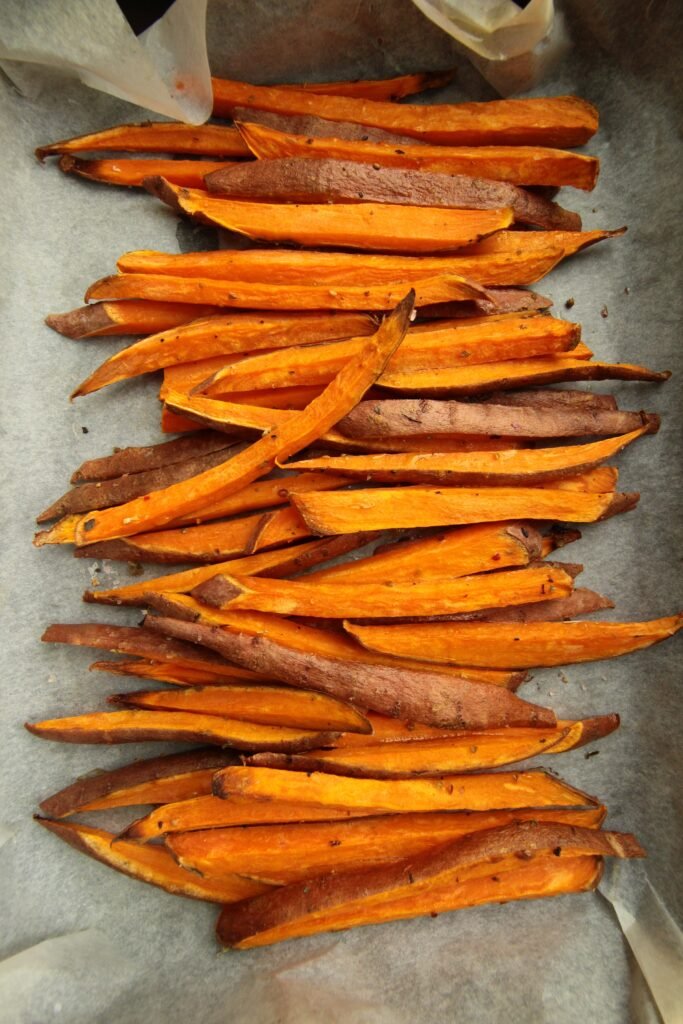
Best protein sources for building muscle
The best protein sources are always going to be from animal sources. This is because they contain a full amino acid profile, unlike vegetarian protein sources. Amino acids are basically the building blocks that make up proteins and you need a certain amount of each in order to maximise muscle gains. Although you can get enough of each amino acid on a vegetarian bodybuilding diet, it is MUCH harder, and you have to eat a very wide variety of sources and need a lot of planning to do it.
The best sources of protein are:
Chicken (leaner sources like breast are better)
Beef (full of vitamins, minerals and creatine, all of which help you build muscle)
Eggs
Milk
All of these protein sources also contain other helpful nutrients that are useful for building muscle, such as B vitamins, creatine, vitamin D, Carnosine, Heme Iron. Some of these will be really hard to find, if not impossible on a vegan diet.
Best fat sources for gains
Fats are also important when it comes to building muscle, but they often get characterised as the enemy by fat loss companies. You just need to make sure you are getting the right types of fats.
Fats assist by helping you to absorb vitamins, production of hormones, protecting cells and nerves, muscle movement
A study in 2021 showed that men who followed a low fat diet had an average of around 63% less testosterone than those who followed a higher fat diet
You should aim for between 15-20% of your calories to come from healthy fats. If you want more info on healthy fats, check out our article on dietary fats.
Great sources of healthy fats:
Almonds
Olive oil
Eggs
Avocado
Seeds
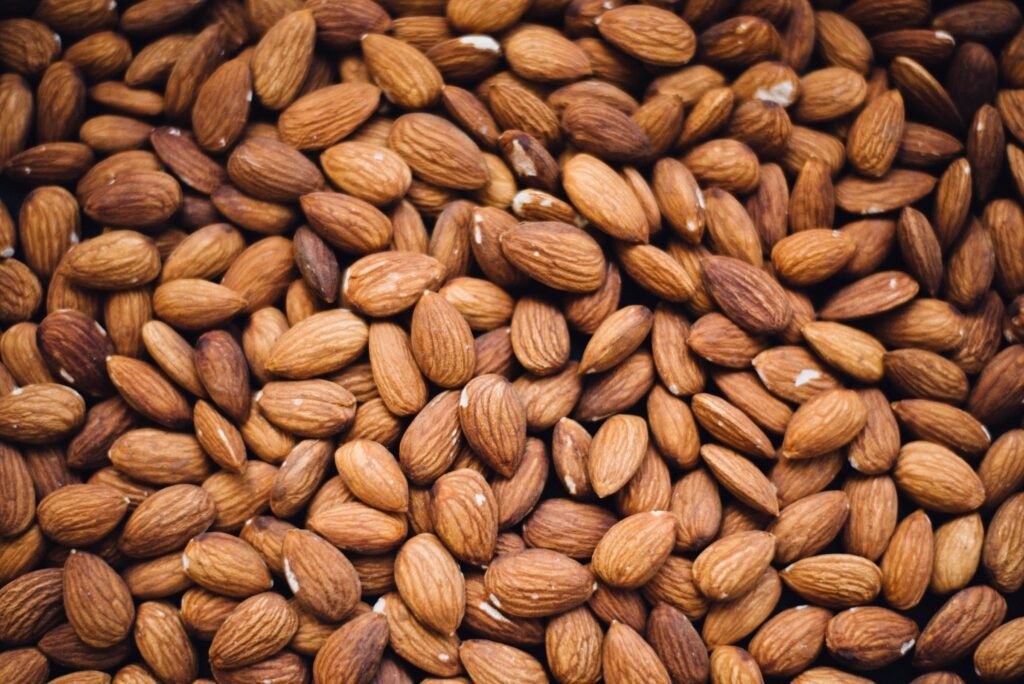
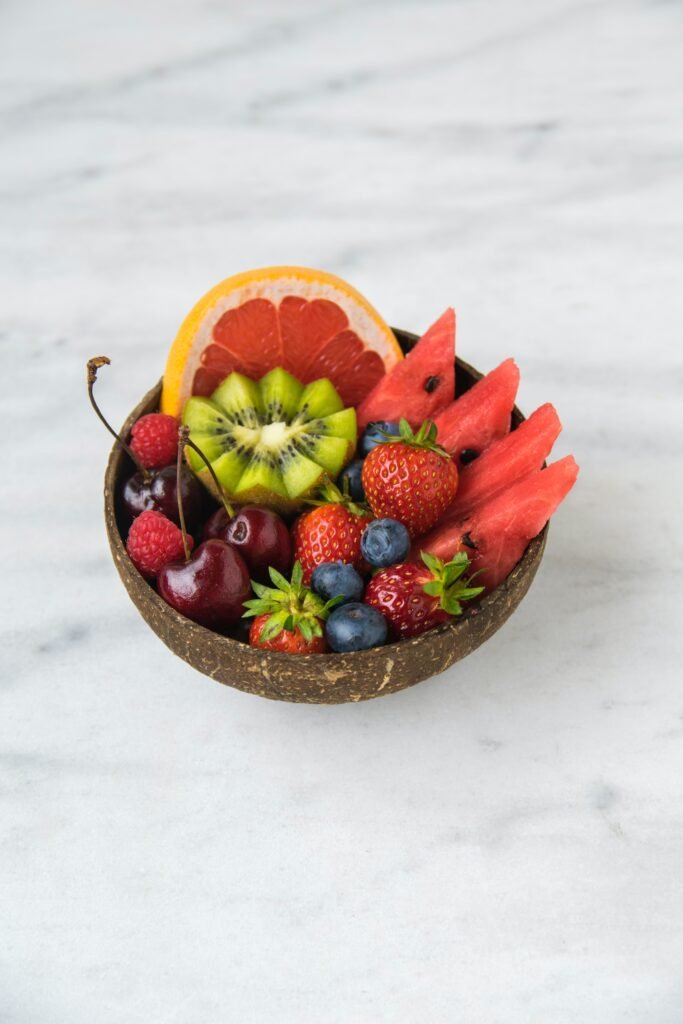
Fruit and Vegetables for bodybuilding
Fruit and Vegetables are also quite important for bodybuilding as this is where you are going to get the vast majority of all of the vitamins and minerals needed to build your body and have enough energy to train.
These are often the most overlooked foods when it comes to building muscle.
This is a huge topic of its own, and we don’t have the time and space to fully explain all of the ins and outs of every vitamin and mineral here. If you are interested, take a look at some of our articles on nutrition, including superfoods, best foods for vitamin D and best foods for iron.
Some of the best fruit and veg sources for muscle building are:
Bananas
Broccoli
Spinach
Kale
Blueberries
Watermelon
Rest and muscle growth
Rest days are just as important as training days. If you don’t get enough rest between workouts, your muscles will not be able to repair and rebuild quick enough for you to grow or get stronger.
During your rest periods, the micro tears mentioned earlier in this article are repaired and the muscle growth takes place. If you don’t get enough rest, the growth will be reduced and sometimes completely non-existent.
To guarantee enough rest for your muscles, train different muscle groups on different days, for example you might do a push day on Monday (Chest, triceps and shoulders), a pull day on Tuesday (back and biceps), and a leg day on Wednesday. This way each muscle group gets at least two rest days before you train it again. For everyone that is natural, i.e not on performance enhancing drugs, it is best to take at least one full rest day per week as well.
Signs that you are not getting enough rest include: Trouble sleeping, muscle soreness that has not gone away since your last workout, plateaus or any reduction in strength
Severe overtraining, where you train at very high volume and intensity and don’t get enough rest, can actually make you very ill.
Good Hydration is key to muscle gain
Proper hydration is key to building muscle for a huge amount of reasons. It could have its own article.
Water is one of the most important compounds in your body. It makes up around 55-60% of your whole body mass. It helps your bones, joints, ligaments and muscles.
Good hydration will help to reduce fatigue, it helps with reducing body temperature when you train and get hot.
When you do weightlifting intracellular water is pushed out and reduced. If this is not replaced, then this can lead to reduced protein synthesis, which is a key part of the process of hypertrophy.
For anyone doing regular weightlifting, you should aim for at least 4 litres of water a day, but don’t drink too much, too much water can be bad for you as well, you can even die from it. A good rule is to look at your urine, if you have managed to make it clear, then you are hydrated enough. If it starts to go yellow, you need to drink a bit more.

Summary
In short… to gain muscle, you need to eat enough calories and protein, get enough rest, and train hard, incorporating progressive overload. If you follow all of the tips outlined above, you cannot go wrong!
Now you know how to build muscle!
For bodybuilding or fat loss recipes check out our nutrition articles.
For ideas about training regimes and exercises to give your current regime a boost, check out our workout articles.
Hi,
My name is Gary and I run All About The Gains.
I am a qualified PT and have been training for 17 years. I have been involved in lots of disciplines from bodybuilding to boxing, functional training to kettlebells, running, Jiu Jitsu and H.I.I.T. I am currently a member of GB top team - an M.M.A gym in south London.
I have spent the last 15 years extensively researching topics on diet and supplements, muscle building, exercise and biomechanics and I write these articles so that the normal person can understand the topic, without having to visit 10+ sites. Each article I write is researched with reference to properly conducted studies. I link to all of these studies so that you can look into it yourself if needed.
-
Gary Davieshttps://allaboutthegains.com/author/admin_aatg/
-
Gary Davieshttps://allaboutthegains.com/author/admin_aatg/
-
Gary Davieshttps://allaboutthegains.com/author/admin_aatg/
-
Gary Davieshttps://allaboutthegains.com/author/admin_aatg/
